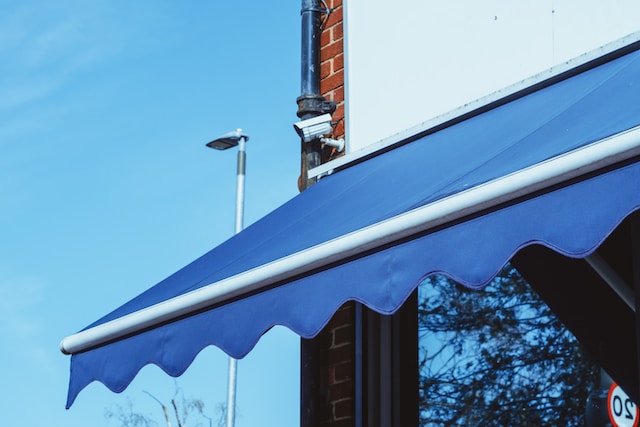
Awnings provide a stylish way to shield windows, doors, and patios from harsh sunlight and rain. In addition, they can reduce the amount of outside heat that enters your home and may even cut down on your energy bill. But before you buy awnings, it’s important to understand the basics. Read on to learn about awning types, shapes, and materials to make the best choice for your needs.
What Is an Awning?
An awning is a roof-like structure attached to your building over a window, door or above the area along a sidewalk. It blocks the sun from shining through windows and doors, helps keep heat out of a house or business in the summer, and can prevent snow build-up on front entryways during the winter. Awnings come in various designs and materials so that you can find the ideal fit for your room. Please choose a fade-resistant fabric to make it last longer, or pick one with a pattern or striped design for more visual interest. You can also select from manual or electric awnings. Manual models require you to crank them open and closed, while motorized options can be controlled with a remote or even by your home automation system. They’re usually more expensive, but they offer a lot of convenience. Some motorized awnings come with features like wind sensors, which will automatically retract the shade when it starts to blow.
Awning Materials
Choosing the best awnings is important because it helps the product last longer and withstand the elements. In addition, certain awning materials are more resistant to UV rays, which can damage any fabric. Another factor to consider is whether or not the awning is inflatable, as these tend to be lighter overall system weight and can offer fast pitch and put-away times. However, they may not be as sturdy in high winds as a fixed product with steel poles. Regarding awning materials, acrylics are popular because they’re strong enough to resist harsh weather conditions and will not mildew or fade excessively. It’s also worth looking into national brand names, as these will be consistent in quality yearly. Also, find out whether the awning has a pro-rated or full warranty in case of future repair needs. These can save money in the long run.
Awning Types
An awning is an extended covering that hangs over a window, door or other exterior surface on the front of a building. It is usually made from a fabric such as cotton, polyester or acrylic stretched over a metal or wood support frame. Awnings are available in various shapes and sizes to suit every home style. They are also available in striped and plain fabrics that complement or contrast the surrounding décor. They can also be fitted with straight or scalloped hems, giving a contemporary tailored look or the traditional street cafe appearance. Your choice of awning will be influenced by its intended use; for example, is it for a business front, or do you want to shade your back garden? Alternatively, you may prefer the security that comes with a motorized model. Studies show that people use their awning ten times more often when operated with a motor than by hand crank.
Awning Installation
Any major home improvement purchase requires research before you make a decision. Awnings are no exception and should be purchased only after a thorough consultation with a company specializing in installing new ones. Awnings are often made of fabric (cotton, polyester, acrylic or a combination) stretched over a frame of steel, aluminum, wood or some other material. Typically, the edges have spring-loaded side arms and are operated with a tape pull or motor. However, you can purchase traditional-style awnings with a crank or hand-held manual operation.
To mount an awning:
- Start by marking the location of the end brackets on the wall using a bubble level.
- Mark the location of the height where you want the awning to be.
- Using a stud finder and drill, locate a rafter, header or framing member to secure the awning. If you are installing an awning over a window or door, ensure enough clearance for the door or window to open fully.